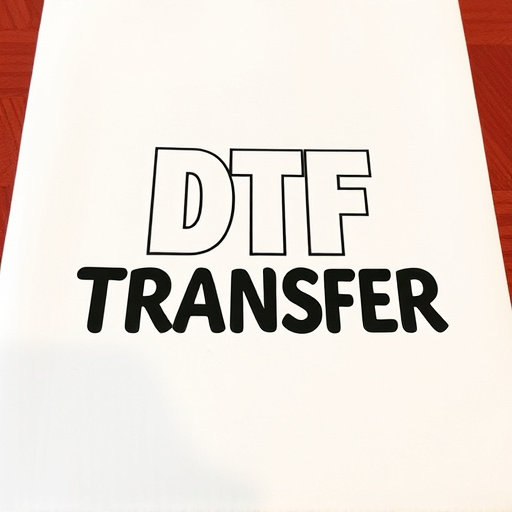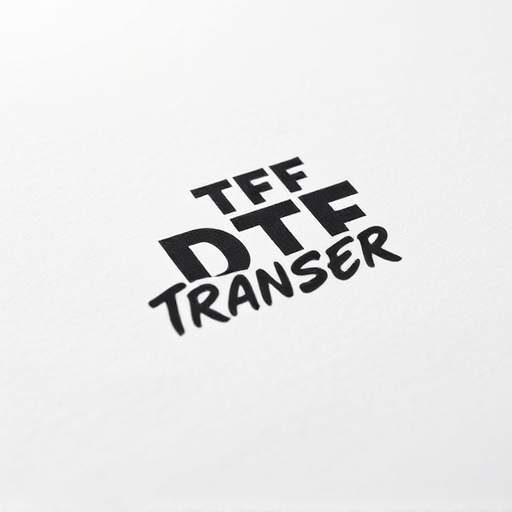Unlocking Durability: Mastering Direct-to-Film Transfers for Wash-Ready Prints
Direct-to-film (DTF) transfer technology has revolutionized printing with its precision color reprod…….
Welcome to an in-depth exploration of the world of Washable DTF (Direct-to-Fabric) transfers, a game-changing technology transforming the textile printing industry. This article aims to demystify the process, highlighting its benefits, applications, and global impact. By delving into various aspects, from technological innovations to economic implications, readers will gain a comprehensive understanding of how Washable DTF transfers are reshaping fashion, marketing, and design.
Definition: Washable DTF transfers refer to a printing method where designs or graphics are directly applied onto fabric through a heat-activation process. This technique allows for high-quality, long-lasting prints on various materials, including cotton, polyester, and linen.
Process: The core components of a Washable DTF transfer include:
Historical Context: While traditional silk screening and heat transfer methods have been around for decades, Washable DTF transfers emerged as a significant advancement in the late 20th century. The invention of high-quality inkjet printers and specialized transfer papers revolutionized the printing process, making it more accessible and cost-effective.
The influence of Washable DTF transfers knows no borders, with its impact felt across diverse regions, each adopting and adapting this technology to suit local markets and cultural preferences.
North America: The United States and Canada have been early adopters, with a thriving fashion industry driving demand for innovative printing methods. Brands often utilize DTF transfers for custom apparel, allowing for unique designs at scale.
Europe: In the European Union, environmental considerations are a key driver. Washable DTF transfers offer a more eco-friendly alternative to traditional printing methods, as they reduce waste and water usage during production.
Asia: China, India, and South Korea have experienced rapid growth in the adoption of DTF transfers due to their ability to cater to high-volume production needs for fast fashion retailers.
Emerging Markets: Countries like Brazil and Mexico are leveraging DTF transfers to foster local design and apparel industries, promoting cultural expression through wearable art.
The economic landscape surrounding Washable DTF transfers is dynamic and multifaceted.
Innovation is at the heart of Washable DTF transfers’ evolution, pushing the boundaries of what’s possible in textile printing.
Ink Formulations: Researchers have developed advanced inks with improved color vibrancy, fast drying times, and enhanced adhesion to various fabrics. Eco-friendly water-based inks are also gaining popularity, addressing environmental concerns.
Print Head Technology: The introduction of more precise print heads has enabled finer detail and smoother gradients in designs, elevating the overall quality of DTF transfers.
Digital Design Software: Sophisticated design software allows for intricate layout design, automation of printing processes, and real-time previewing, streamlining production workflows.
Automated Systems: Full-scale automation of DTF transfer machines has increased efficiency, reduced human error, and enabled higher production volumes.
As with any rapidly growing industry, Washable DTF transfers operate within a regulatory framework designed to ensure quality, safety, and environmental protection.
Product Safety: Authorities in various countries mandate specific standards for ink composition and fabric treatment to safeguard consumer health.
Intellectual Property: Copyright laws play a crucial role, protecting designers’ original artwork from unauthorized reproduction on DTF transfers.
Environmental Regulations: The EU’s REACH (Registration, Evaluation, Authorization, and Restriction of Chemicals) regulation influences ink formulations and waste management practices within the industry.
Despite its many advantages, the Washable DTF transfer industry faces challenges that require ongoing attention.
Cost vs. Quality: While lower-cost options are available, high-quality DTF transfers remain a premium offering, impacting pricing strategies for brands and consumers.
Sustainability: While more eco-friendly practices are emerging, the industry must continue to innovate to reduce its environmental footprint, especially in water usage and waste generation.
Design Copyright Infringement: Effective enforcement of copyright laws is essential to protect designers’ intellectual property and encourage original artistic creation.
The versatility of Washable DTF transfers has led to their widespread adoption across various sectors.
Fashion Apparel: Custom T-shirts, hoodies, and jackets are popular applications, allowing brands to offer unique designs without large minimum order quantities.
Marketing and Promotions: Companies utilize DTF transfers for promotional merchandise, such as branded caps, bags, and phone cases, enhancing brand visibility.
Event Merchandise: Live events, festivals, and sports tournaments often rely on DTF transfers for creating custom souvenirs, ensuring high-quality, timely production.
Art and Design: Independent artists print limited-edition art pieces on fabric, offering a unique medium for collectors and interior decorators.
Washable DTF transfers have transcended their humble beginnings as a printing method to become a catalyst for innovation, creativity, and economic growth. As technology continues to evolve, this process will likely become even more accessible, efficient, and environmentally friendly. With its global reach and diverse applications, the future of Washable DTF transfers looks bright, promising to bring vibrant designs to fabrics worldwide.

Direct-to-film (DTF) transfer technology has revolutionized printing with its precision color reprod…….

Direct-to-film (DTF) transfer technology has revolutionized printing and design, particularly in tex…….

Direct-to-film (DTF) transfer technology revolutionizes the textile industry by enabling high-qualit…….

Direct-to-film (DTF) transfer technology offers high-quality custom design creation on diverse mater…….

Direct-to-film (DTF) transfer technology revolutionizes printing by offering high-quality, intricate…….

DTF (Direct-to-Film) Printing is a cutting-edge textile printing method that bypasses traditional te…….

DTF (Direct-to-film) printing offers cutting-edge durability and vibrancy in print production across…….

Direct-to-film (DTF) printing is a cutting-edge technology offering high-quality, vibrant custom pri…….

Direct-to-film (DTF) transfer technology has revolutionized the textile industry, offering precise a…….

Direct-to-film (DTF) transfer technology is revolutionizing the textile industry by enabling high-qu…….